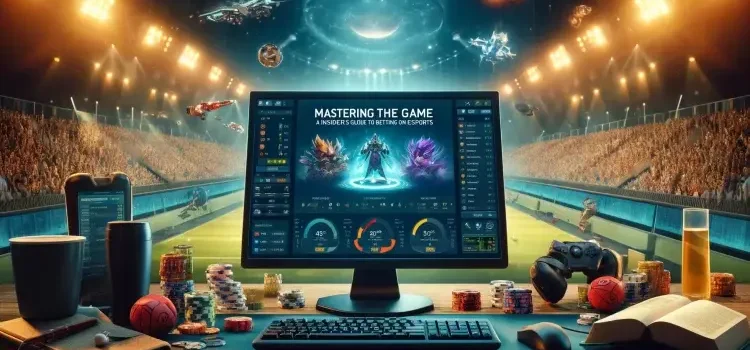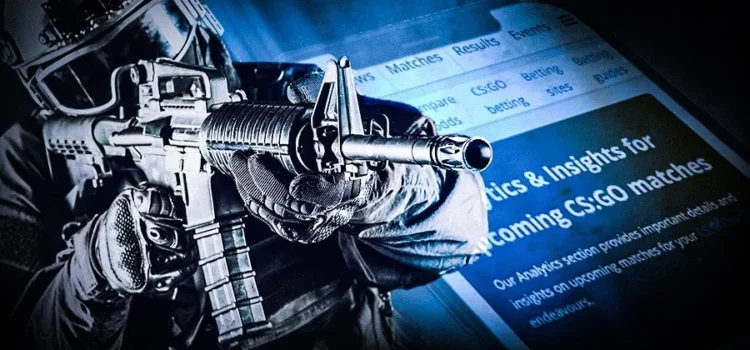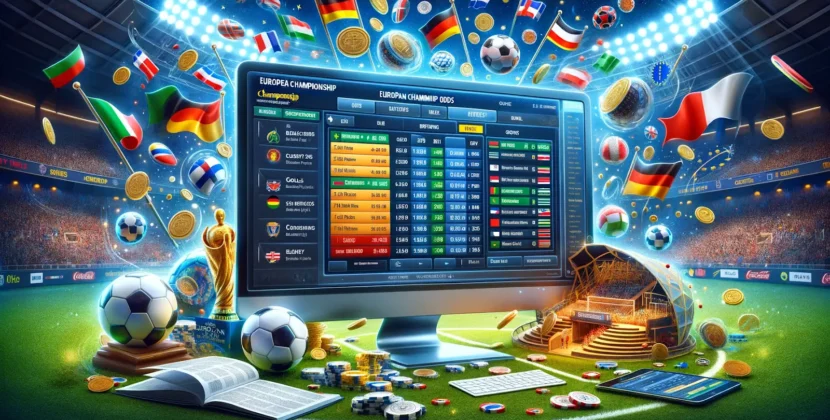The esports betting scene has experienced explosive growth in recent years, transforming from a niche interest to a multi-billion-dollar industry.
As more and more people tune into competitive gaming tournaments like Counter-Strike, League of Legends, Dota 2, and Valorant, the market for esports betting has expanded exponentially.
This guide aims to provide a thorough understanding of the different types of esports bets available at the top betting platforms.
Whether you’re a seasoned bettor or a newcomer, this information can help you navigate the world of esports betting, giving you the tools to make informed decisions.
Basic Esports Betting Types
1. Outright Bets
Outright betting is one of the simplest and most common types of bets in esports.
It involves wagering on the outcome of an event, typically a tournament or match.
Outright bets are particularly popular for large events, such as The International (Dota 2) or the Intel Extreme Masters (CS).
Bettors place their wagers on which team will emerge as the overall winner of the tournament or match.
These bets are often placed well in advance of the event, and the odds can vary significantly as the event draws closer.
- Tournament Winner: The most common outright bet. You simply predict which team will win the entire tournament. These bets are typically made before the event begins, but some bettors enjoy placing them early to capitalize on better odds.
- Match Winner: As the name suggests, you bet on which team will win a particular match. Match winner bets are prevalent for almost all esports games, including League of Legends, Dota 2, and CS. This is a straightforward bet and great for beginners.
- Moneyline Bets: Often used interchangeably with match winner bets, a moneyline bet simply involves betting on which team will win a match without considering any point spreads. The odds will reflect the strength of the teams involved.
- Bracket/Group Winner: Instead of betting on the tournament’s overall winner, you can bet on who will win specific groups or brackets in a tournament. This type of bet is similar to outright betting but is more focused on a particular stage in the competition.
2. Score-Based Bets
Another popular type of outright bet involves wagering on the final score of a match.
This is known as “exact score” betting. For example, in a CS mmatch, you might bet on a team winning 2-1 or 3-0.
Betting on the exact score can yield high rewards, but it’s also quite challenging to predict, especially in games with close matchups.
Many sportsbooks offer this type of bet in live betting markets, where odds fluctuate as the match progresses.
3. Player-Specific Bets
Esports is as much about individual player performance as it is about team dynamics.
Many bettors choose to place wagers based on the performance of individual players rather than betting on the outcome of a match or tournament.
- Player Performance: In this bet, you wager on a specific player’s in-game statistics, such as the number of kills in CS or Valorant, or the amount of damage dealt in Dota 2. These bets tend to have higher odds due to their complexity, requiring in-depth knowledge of player performance and form.
- Top Player/MVP: Similar to player performance, this bet focuses on predicting the most valuable player (MVP) of a match. For example, in League of Legends or Valorant, you bet on which player will perform best across the course of a match or series.
4. Prop Bets
Prop bets, or proposition bets, are wagers placed on specific events or occurrences within a match, which may or may not be directly tied to the overall result.
These could include bets on whether a team will win a certain round, whether a player will score the first kill, or if a game will go into overtime.
Prop bets are specific to each game, and they add an extra layer of excitement for bettors who want to engage with the action in a more detailed way.
Complex Esports Betting Types
Once you’ve mastered the basic types of bets, you can dive into more specialized forms of betting that offer higher rewards, but also greater risks.
These types of bets often require more knowledge of the game mechanics, the teams, and the players involved.
1. Handicap Betting
Handicap betting is used when one team is perceived to be much stronger than the other.
In this situation, the bookmaker gives a virtual disadvantage (handicap) to the stronger team.
This makes betting on the favorite more interesting because you can still get competitive odds.
For example, if a team like SK Telecom T1 in League of Legends is heavily favored to win, you might bet on them to win by a specific number of rounds or maps.
If they win but fail to cover the handicap, your bet would lose.
2. Accumulator Bets (Combi-Bets)
Accumulator betting allows you to place bets on multiple events within a single wager. In order to win, you need all selections to come true.
The odds for an accumulator are higher because the bet is more difficult to win, but the potential payout is significant.
For example, you could place a bet on the winners of three different CS or Valorant matches.
If all three teams win, you will earn a higher payout than if you had placed individual bets on each.
- Doubles: A double is an accumulator bet with only two legs. It’s a simpler and less risky version of an accumulator bet.
- Triples: A triple includes three selections. Like doubles, but with higher risk and reward.
- System Bets: System bets work similarly to accumulators, but they allow you to hedge your bets. With a system bet, you can still win even if one of your selections doesn’t come through, as long as enough other bets are successful.
3. Over/Under Bets
An over/under bet is one of the most common types of betting across many sports, and esports is no exception.
With this type of bet, the bookmaker sets a line for a particular stat (such as the total number of rounds in a CS match or the number of kills in a Dota 2 game), and you bet on whether the actual number will be over or under that line.
For example, you might bet on whether a LoL match will last over 30 minutes.
If it does, and you bet the over, you win.
4. Live Betting
Live betting has revolutionized esports wagering by allowing bettors to place bets after a match has begun.
Live betting markets include all the standard bet types, but they update in real-time, giving bettors the opportunity to react to what is happening in the match.
For instance, you can place a bet on the winner of a round or the total number of kills a player will achieve during the match.
Many esports bookmakers offer live streaming as well, so bettors can watch the action unfold and make more informed decisions.
5. Skin Betting
Skin betting is unique to the esports world. In this type of betting, you wager virtual items, such as skins from CS or Dota 2, instead of real money.
These skins are cosmetic items used to customize weapons or characters in-game. Skin betting is most popular with CS, where skins are used as currency for placing bets.
This type of betting is more informal, often involving smaller amounts of money, but still carries the excitement of traditional esports betting.
6. Fantasy Esports Betting
Fantasy esports betting is growing in popularity, particularly in markets like the United States.
Platforms like DraftKings and FanDuel offer fantasy esports leagues where you can draft players into your fantasy team based on their performance in actual matches.
You score points based on your players’ performances, and the better your team performs, the higher your payout.
Fantasy esports is a fun and strategic way to get involved in betting without focusing on the outcome of individual matches.
Conclusion
Esports betting has evolved into a complex and diverse industry, with a vast array of bet types available for those willing to explore.
Whether you’re betting on a tournament winner, the first kill in a CS match, or the total number of rounds in a LoL game, understanding the different types of bets can enhance your experience and increase your chances of success.
As the industry continues to grow, more innovative betting options are likely to emerge.
For those serious about making money from esports betting, a well-rounded understanding of these various betting types is essential.
It’s important to approach esports betting with a blend of knowledge, strategy, and caution, as the best bettors are those who stay informed and take calculated risks.










